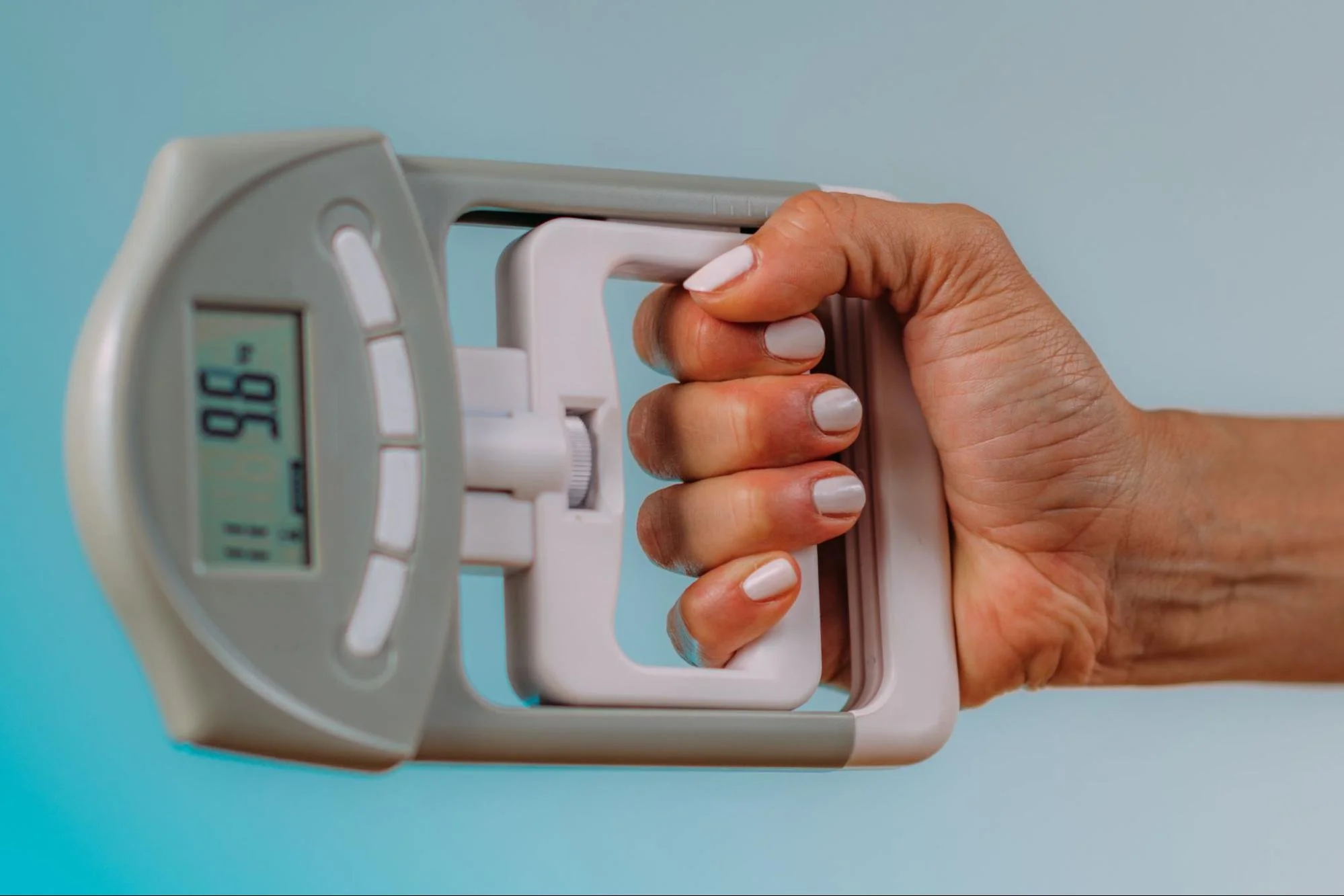Why Is Grip Strength Associated with Increased Longevity?
Last Updated: November 2025
Medically Reviewed by Dr Jessica Knape, MD MA. Board Certified in Internal Medicine and Integrative and Holistic Medicine
The Short Answer
Grip strength — how firmly you can squeeze something, like a dynamometer or handshake — is more than a measure of hand power.
It’s a simple, low-tech window into whole-body health and biological aging.
Across dozens of studies, stronger grip strength predicts:
Longer life expectancy
Lower risk of heart disease, stroke, and dementia
Better physical function and independence with age
In fact, researchers now call grip strength a “vital sign of aging.”
What Grip Strength Really Measures
Your grip strength reflects much more than muscle in the hand and forearm — it’s an integrated marker of:
Muscle mass and quality throughout the body
Nervous system function, including motor neuron health and brain-muscle coordination
Cardiovascular fitness and oxygen delivery
Metabolic health, including insulin sensitivity and inflammation levels
Essentially, if your body’s systems are working well, your grip strength tends to stay strong.
When those systems decline — due to chronic illness, inflammation, poor nutrition, or inactivity — grip strength drops early and measurably.
1. The Science Behind the Longevity Connection
Predictor of Mortality and Disease
Large cohort studies consistently show that weaker grip strength predicts earlier mortality, independent of age, gender, or body size.
The PURE study (Prospective Urban Rural Epidemiology) followed 140,000 people in 17 countries and found that for every 5-kilogram decrease in grip strength, there was a 16% higher risk of death from any cause and a **17% higher risk of heart disease.**¹
A 2022 BMJ meta-analysis confirmed that grip strength predicts both cardiovascular and cancer mortality better than blood pressure in some age groups.²
Why? Weak grip strength reflects systemic decline — sarcopenia (loss of muscle), poor mitochondrial function, and low-grade inflammation — all central to aging biology.
2. Muscle as a Metabolic Organ
Skeletal muscle is not just for movement; it’s a major metabolic and endocrine organ.
It stores glucose, regulates insulin, and produces myokines — signaling molecules that reduce inflammation and protect organs, including the brain.³
When muscle strength declines:
Insulin resistance increases
Inflammatory cytokines rise
Bone and cardiovascular health worsen
Thus, grip strength mirrors how “metabolically young” your body is — not just how strong your hands are.
3. Brain–Body Connection
Grip strength is also tied to neurological resilience.
Studies link declining grip to:
Slower cognitive processing
Higher risk of mild cognitive impairment and dementia⁴
Reduced mobility and falls in older adults
This likely reflects shared pathways of brain and muscle aging — oxidative stress, microvascular damage, and neuro-inflammation.
So a strong grip often signals not just physical vitality but cognitive robustness.
How to Improve Grip Strength — and Why It Matters
The best way to improve grip strength is through progressive resistance training — especially movements that engage multiple muscle groups:
Pull exercises (rows, deadlifts, resistance-band pulls)
Farmer’s carries (walking with weights)
Hand grip tools or stress balls for daily squeezes
Combine this with:
Adequate protein intake (at least 1.2 g/kg of body weight daily for most adults)
Vitamin D and magnesium optimization
Anti-inflammatory nutrition (Mediterranean-style diets support muscle metabolism)
Even small improvements in grip strength over time correlate with better outcomes in frailty and cardiovascular risk scores.
The Takeaway
Grip strength is one of the simplest, most powerful indicators of functional longevity — how well your body and brain are aging together.
It integrates signals from muscle, metabolism, heart, and brain health into one measurable number.
At Healthspan Internal Medicine, we view it as a biomarker of resilience:
Strong grip strength doesn’t just predict a longer life — it predicts a better one.
Sources
“Grip Strength: An Indispensable Biomarker For Older Adults” (PMC article)
UCLA Health News — “Grip strength an important biomarker for assessing health”
JAMA — “Midlife Hand Grip Strength as a Predictor of Old Age Functional Limitation and Disability”
Confluent Health — “Grip Strength: A Measure That Holds Onto Longevity”
Medically reviewed by
Dr. Jessica Knape, MD, MA Board Certified in Internal Medicine and Integrative and Holistic Medicine
Healthspan Internal Medicine — serving patients in Boulder, CO
Book a Discovery Call | About Dr. Knape
This content is for educational purposes and does not replace personalized medical advice.

